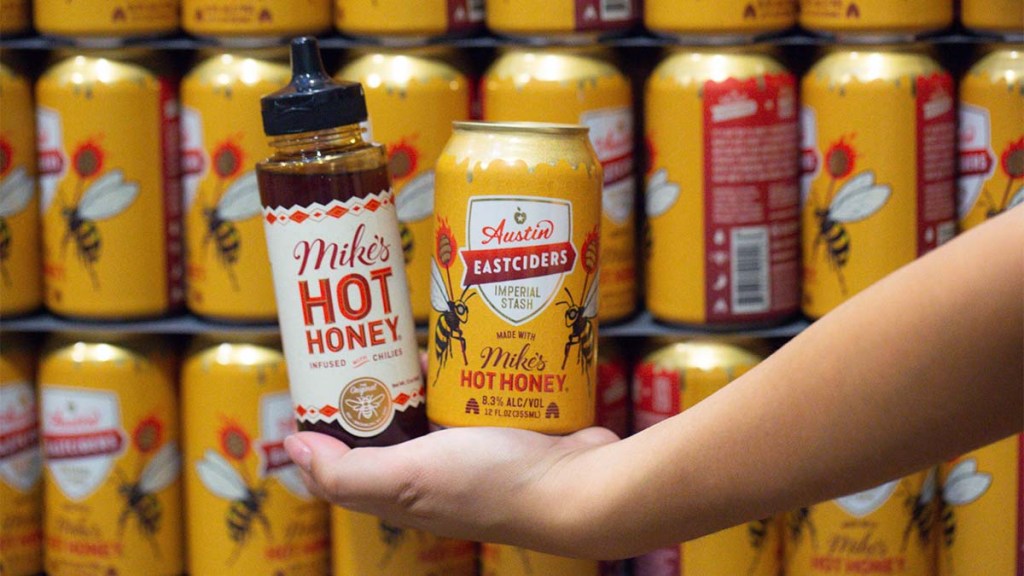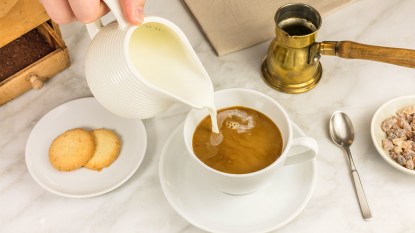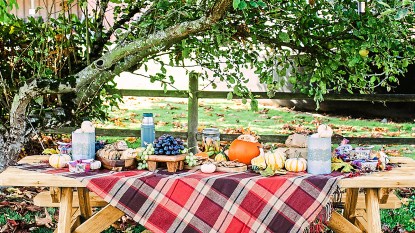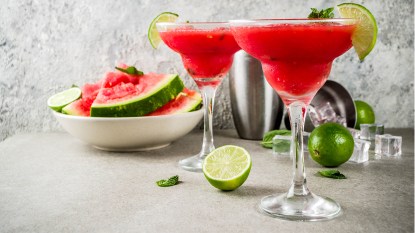5 Fun Things To Know About Hard Cider, Fall’s Favorite Drink
Other seasonal sips simply don't compare.
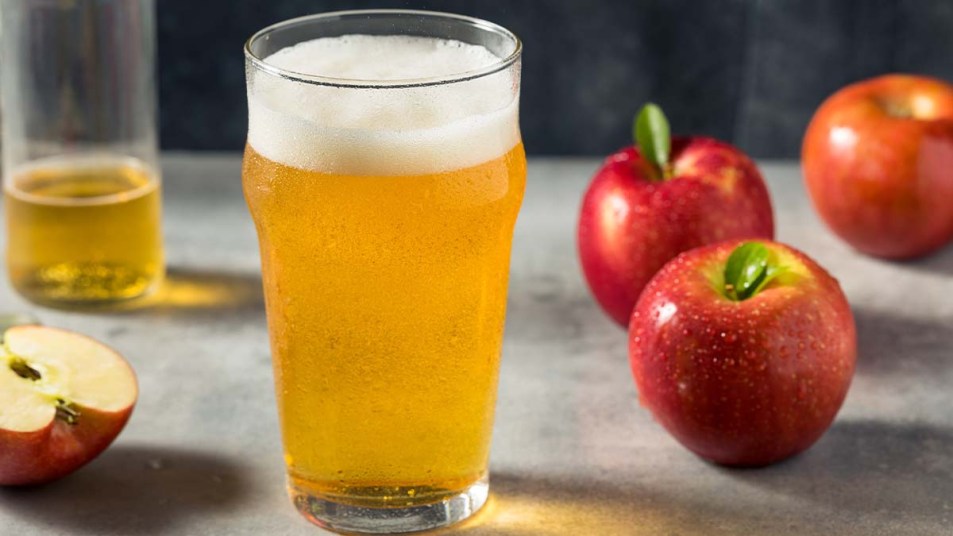
Pumpkin spice lattes, take a backseat — it’s hard apple cider’s time to shine. Cider can be enjoyed as a refreshing, boozy treat or a warm, fireside sip, which is why it’s the perfect fall drink. Its alcohol content is typically lower than similar seasonal beverages, and its fruity, earthy notes give it a flavorful edge. But the unique qualities of this fermented apple juice don’t end there. Here are five interesting facts about hard cider.
Cider has a lengthy history.
“Hard cider has an ancient history across the world ever since apples emerged from the mountainous wilds of Kazakhstan [in Central Asia], and has an important place in American history too. The modern era of cider in America began in the late 1980’s and early 1990’s in regions where apples are traditionally grown (the Northeast, the Pacific Northwest, the Mid-Atlantic, and the Great Lakes). Cidermakers today enjoy experimentation and create new ciders from every corner of the world.” –Soham Bhatt, Co-founder of Artifact Cider Project
Hundreds of apple varieties are used to make cider.
“Back in the day there were over 14,000 apple varieties grown. Fast forward to present day until hard cider made its resurgence, and there were maybe 10. Now, hundreds of nearly extinct varieties are making a comeback, including the Harrison, which was used to create the historic Newark Cider that even George Washington preferred to any other. At Ironbound Hard Cider, our orchardists are helping to revive this iconic apple for our own cider production.” –Cameron Stark, Co-founder and Cidermaker at Ironbound Hard Cider
This drink closely resembles other alcoholic beverages.
“Cider is technically a wine by federal and scientific definition — it’s not heated or ‘brewed’ like beer, it’s fermented at natural temperatures with native or pitched yeast, like wine. Many ciders are very wine or champagne-like in nature, while others lean closer to craft beer styles (sours, hazy IPA) and can also utilize hops and other fruits and botanicals as adjunct ingredients to highlight seasonal flavor profiles.” –Elisabeth Osmeloski, Co-founder of Scion Cider
Cider makes the best Thanksgiving turkey.
“With Thanksgiving coming up, you can use hard cider to make the juiciest turkey possible for your meal. Rubbing hard cider into your turkey and using it as a brine at the bottom of your turkey dish infuses the bird with the apple taste and makes the meat a lot more tender and juicy.” –Isabella Flint, Professional Chef, Founder, and CEO of Fanatically Food
You can make cider at home.
“Using a simple homemade culture called a Ginger Bug, anyone can make hard cider at home. Simply add a bit of a Ginger Bug starter to store-bought apple juice and allow it to ferment for a few days and voilà — fizzy hard cider! A Ginger Bug is just a starter culture made from fresh ginger root, sugar, and water that can be used to ferment drinks. You can also use yeast, but that will give your drink a stronger, beer-like flavor. Making homemade hard cider has become a fun fall tradition for me and my girlfriends.” -Diane Kuthy, Founder of Sandpoint Soda Company
A cider worth sipping.
With those fun facts in mind, it’s time to raise a glass and enjoy your favorite fall cider. One that I’m currently loving is the Austin Eastciders Imperial Stash: Mike’s Hot Honey Cider (Buy from AustinEastciders.com, $13.99). This Austin Eastciders and Mike’s Hot Honey collaboration produces a higher 8.3 percent ABV cider with a gold, cloudy appearance. Also, the cider has mouthwatering notes of sweet honey, chilies, and crisp apples. “Cider lovers will appreciate the perfectly balanced sweet heat flavor our hot honey brings to this cider. It’s got a subtle kick that lingers as you sip,” explains Mike Kurtz, founder of Mike’s Hot Honey. To this, we say “Cheers!”
